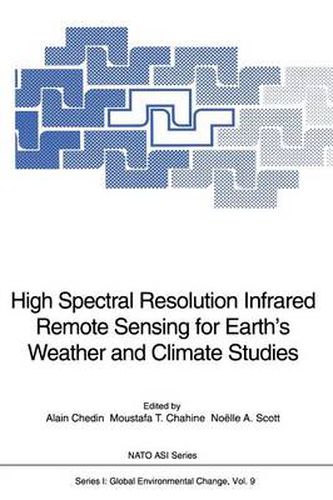Readings Newsletter
Become a Readings Member to make your shopping experience even easier.
Sign in or sign up for free!
You’re not far away from qualifying for FREE standard shipping within Australia
You’ve qualified for FREE standard shipping within Australia
The cart is loading…






This title is printed to order. This book may have been self-published. If so, we cannot guarantee the quality of the content. In the main most books will have gone through the editing process however some may not. We therefore suggest that you be aware of this before ordering this book. If in doubt check either the author or publisher’s details as we are unable to accept any returns unless they are faulty. Please contact us if you have any questions.
One of major challenges facing Earth’s science in the next decade and beyondis the development of an accurate long term observational data set to study global change. To accomplish this, a wide range of observations will
be required to provide both new measurements, not previously achievable and measurements with a greater degreee of accuracy and resolution than the ones which are presently and currently available. Among the parameters that are currently retrieved from satellite vertical sounding observations, temperature and moisture profiles are the most important for the
description of the thermodynamic state of the medium. Other
parameters, like those describing the cloud fields, the surface state
or the conditions close to the surface are also key parameters for
meteorology and climatology. A new generation of high spectral atmospheric sounders in the infrared has recently been designed to provide both
new and more accurate data about the atmosphere, land and oceans for
application to climate studies. Among the important observations that these instruments should contribute to the climate data set are day and night
global measurements of: atmospheric temperature profiles; relative
humidity profiles; cloud field parameters; total ozone burden of
the atmosphere; distribution of minor atmospehric gases (methane, carbonmonoxide and nitrous oxide).
$9.00 standard shipping within Australia
FREE standard shipping within Australia for orders over $100.00
Express & International shipping calculated at checkout
This title is printed to order. This book may have been self-published. If so, we cannot guarantee the quality of the content. In the main most books will have gone through the editing process however some may not. We therefore suggest that you be aware of this before ordering this book. If in doubt check either the author or publisher’s details as we are unable to accept any returns unless they are faulty. Please contact us if you have any questions.
One of major challenges facing Earth’s science in the next decade and beyondis the development of an accurate long term observational data set to study global change. To accomplish this, a wide range of observations will
be required to provide both new measurements, not previously achievable and measurements with a greater degreee of accuracy and resolution than the ones which are presently and currently available. Among the parameters that are currently retrieved from satellite vertical sounding observations, temperature and moisture profiles are the most important for the
description of the thermodynamic state of the medium. Other
parameters, like those describing the cloud fields, the surface state
or the conditions close to the surface are also key parameters for
meteorology and climatology. A new generation of high spectral atmospheric sounders in the infrared has recently been designed to provide both
new and more accurate data about the atmosphere, land and oceans for
application to climate studies. Among the important observations that these instruments should contribute to the climate data set are day and night
global measurements of: atmospheric temperature profiles; relative
humidity profiles; cloud field parameters; total ozone burden of
the atmosphere; distribution of minor atmospehric gases (methane, carbonmonoxide and nitrous oxide).